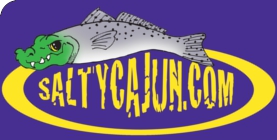 Redfish and Specks Benefit from Limited Weir Closings
Redfish and Specks Benefit from Limited Weir Closings
Most know that over the past four years, colleagues and I have been weighing and measuring fish for a three week period in May/June for the purpose of computing relative condition factor (a measure of overall health/plumpness) and correlating with various environmental factors. Measurements of weight and length of over 1000 fish over 4 years allow us to test hypotheses and quantify which causal factors seem most closely related to fish plumpness.
After the Prien meeting in July, we contacted Leigh Anne Sharpe requesting the historical weir opening data for the purpose of trying to correlate weir openings and closings with fish plumpness. If closing the weirs was "choking the lake" then this would show up a positive correlation between weir openings and relative condition factor.
The results of the best fit trend lines are shown in the attachment for redfish and specks. The horizontal axis is the fraction of the total possible time and area of weirs being open the 90 days prior to a fish being measured. We picked a 90 day window, because fish plumpness tends to depend on food availability over the past three months and a 90 day window revealed the strongest correlations with all environmental factors (salinity, temperature, weir openings). The correlations were negative and significant for the available data between 40% and 80% weir openings. In other words, once the average area of the weir openings over the past 90 days is 40% of the total possible opening, keeping the weirs open for longer seems to decrease the plumpness of the fish.
Since this is a relatively recent and preliminary result, my colleagues and I have been hypothesizing why opening the weirs more is well correlated with the fish being thinner. Here are some ideas:
1. Specks and redfish are drawn to moving water. Perhaps the fish so strongly aggregate in the moving water of the weirs that the energy spent fighting the moving water and competing for the point source food supplies is less conducive to weight gain than foraging in other parts of the lake. It's not that the weirs don't add lots of food to the lake, but that the resulting competition and exertion promotes less plumpness than more sedentary feeding lifestyles throughout the lake.
2. Weir openings are a two way street. Bait flows back and forth. It may be that above 40% openings, the net flow of bait is out of the lake and back into the marsh, and that the marsh actually provides more challenging foraging conditions for the fish (or fewer fish make it back into the marsh).
3. In the case of specks, at least part of the negative correlation may be attributed to a separate causal factor: salinity and osmoregulation. Low salinity causes the weirs to be opened. Lower salinity also increases osmoregulation costs in specks (they prefer saltier water). However, if this were the whole story, relative condition factor in specks would be more strongly correlated (positively) to salinity than negatively correlated to weir openings. As it turns out relative condition factor in specks is more negatively correlated with weir openings than its (+ or -) correlation to any other factor studied.
4. Likewise, redfish have stronger negative correlations with weir openings than any other (+ or -) correlation studied. Unlike specks, redfish are very happy in the whole range of salinity found in Big Lake, and fresher water does not raise their osmoregulation costs.
We do intend to perform more detailed length class analyses to see of different length classes of each species respond more or less strongly to weir openings.
|






